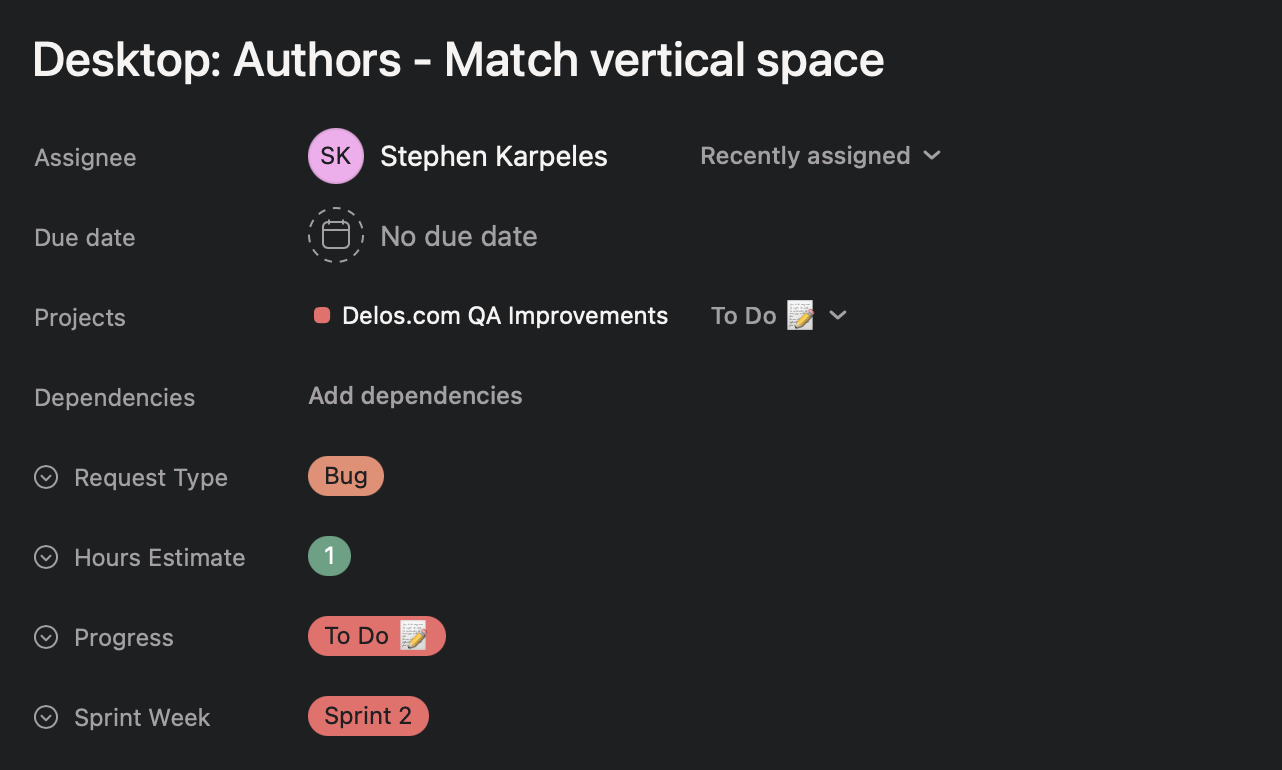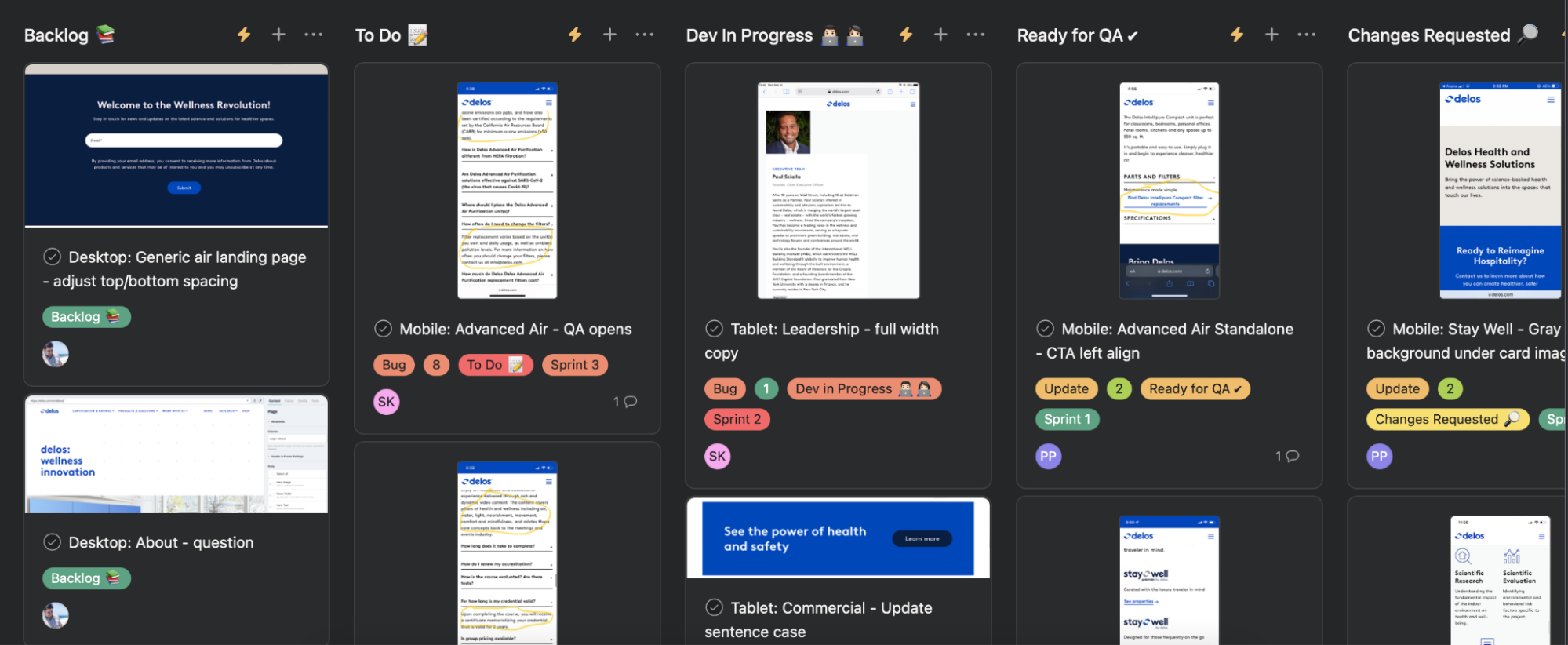Most web development workflows are painful at best. Having worked with a number of agencies over the years, I can tell you that I have yet to experience a smooth, enjoyable project management process as a developer. Overly confusing JIRA boards, rapidly shifting priorities, poorly estimated tasks, and giant wads of red tape are the norm for many of us.
But what if we did things differently? What if we, as an agency, set out to get things right?
Well, at FXN Studio, we did. And here’s how we did it.
Keep It Simple
First things first, we use Asana. Asana is a work management platform designed to streamline project-related communication and help teams organize, track, and manage their work.
Say what you will about Asana, but if nothing else, it’s simple to use. Create a task. Assign it. Slap a due date on it. Add some tags if you want, and you’re done.
Essentially, Asana is like a public bulletin board that is made up of many different to-do lists for every member of your team. When you finish a task from your own project board, mark it as complete and enjoy the fun animation as a reward for staying on schedule.
Here’s what a typical task looks like for us:

Note the key dropdown categories in the image above (under dependencies). Each category is made up of up to five different labels that are described below:
-
Request Type
- Bug (non-urgent fix such as a link not working, styling fix, etc.)
- Feature (new feature or functionality such as custom filtering)
- Update (copy or image update)
- Hotfix (something broken that needs to be fixed ASAP)
- Spike (research on how long a separate task will take)
-
Hours Estimate
- 1 hour
- 2 hours
- 4 hours
- 8 hours
- 16 hours
- Anything over 16 hours gets split into separate tasks
-
Progress
- Backlog
- To Do
- Dev In Progress
- Ready for QA
- Changes Requested
- Ready to Launch
- Released
-
Sprint Week
- Sprint 1
- Sprint 2
- Sprint 3
- etc.
Every task we receive is sorted onto the appropriate board by our project manager. Then the developer goes in and fills out the labels: Request Type, Hours Estimate, etc. We categorize the task, estimate the hours, set a progress status, and it’s off to the races.
Here’s what it looks like after a developer fills out the labels:
One side note here: We intentionally limit the choices for each task. This keeps things simple. For example, there are only five choices for “Hours Estimated” and five choices for “Request Type.” Even though we could offer more choices under these categories, we don’t want project management to become the equivalent of picking out toothpaste at the grocery store.
Leave Room for Unexpected Bugs
Just like most agencies, we work with clients who have unexpected bugs that arise during the week: the navigation breaks; the logo isn’t appearing; a link is disabled—you get the idea.
So instead of fully booking our 2-week sprints, we leave 6 hours open per week for “bug fixing time.” This keeps us from getting backlogged and pushing more work into the next sprint when bugs do pop up—and trust me, they always do.
If a miracle occurs and there are no bugs for the week, we simply grab an extra task or two from the backlog and knock them out to fill the blocked-out 6 hours. :-)
Walking Hand-in-Hand: Developers and Project Managers
Developers and project managers are no longer butting heads, they’re working together, hand-in-hand, with an organized workflow as their solid foundation. Developers get to set realistic hourly estimates on their tasks and make sure they still have time for bug fixes. Project managers know exactly how long everything should take and can see the whole sprint (and backlog) at a high level in real-time.
Here’s the “Kanban,” or more zoomed out, view of the board:

As each task moves through the workflow, everyone who is shared on the project boards can visually see how things are progressing through the sprint. Our project manager updates the workflow progress often to help us maintain a more accurate representation of that tasks that are still at-hand.
A Whole New World…
“A new fantastic point of view…” Okay, I’ll stop the Aladdin train right there. But in all seriousness, I have never felt more in control, more empowered, and more relaxed about a project management process in my life until I experienced a tool like Asana.
I come into work actually looking forward to updating my tasks. I want the mini serotonin boost from clicking the little green checkmark when I’m finished with a task and seeing a congratulatory message from a rainbow-streaked critter float across my screen. Between the interactive nature of Asana, the simplicity of the workflows, and the intuitive communication features, the whole ship sails much more smoothly with this work management platform at the helm.
Onwards and upwards.
